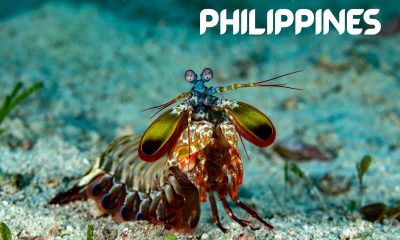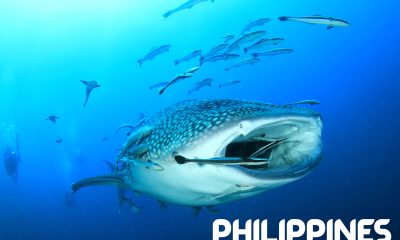Blogs
Diving in the Kelp of South Korea
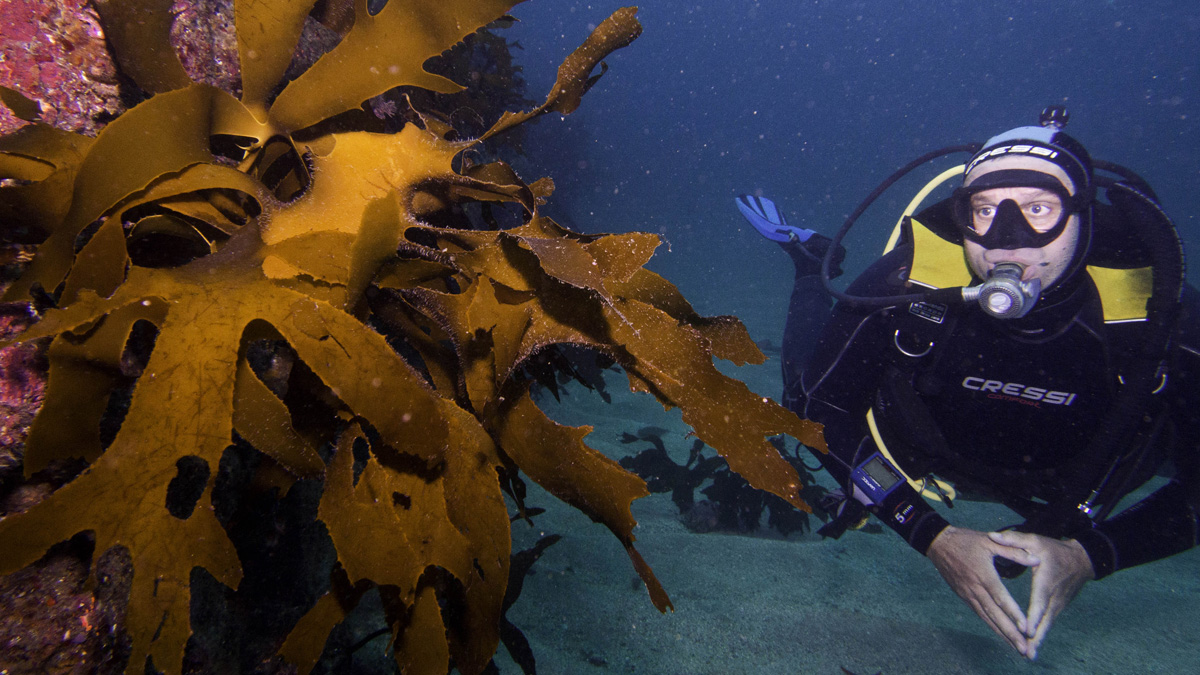
I had fallen behind the group, again, and as I caught up with them they were all gathered round a couple of rocks, looking intently at something. Ralf, our dive guide, was pointing out. As I approached them, they all let me through (they were a lovely group to dive with!) to have a look and here were two beautiful, bright orange nudibranchs, both about six inches long, and certainly not something I expected to see among the kelp whilst diving off a harbour breakwater!
Last year, when I was planning an overseas holiday, I realised that it had been ten years since I last visited my family in South Korea. However, I wasn’t about to go on holiday and not go diving! There wasn’t, and still isn’t, a huge amount of information about diving in South Korea (in English; there’s plenty in Korean, but I read Korean a lot slower than English), but where there’s a will, there’s a way – and through the magic of Google, I booked six days of shore diving; four days off Jejudo with Big Blue 33, and two days off Busan with Busan Seaworld Dive Center. Both had owners/staff who spoke excellent English, so communication wasn’t a problem.
After paying my respects to various members of my family, I was off to Jejudo at the first available opportunity. Jejudo is the biggest island off the coast of Korea and its second biggest city, Seogwipo, has the best diving South Korea has to offer. Situated on the south side of Jejudo, Seogwipo is located in a temperate climate and has a tropical current coming from the south. All the pictures, videos and dive centre information promised that it wasn’t going to be tropical diving, but there was going to be an interesting mix of warm and cold water diving.
We didn’t have the most auspicious start to the diving. A recent change in the interpretation of boat licensing laws by the local coastguard had put an end to all boat diving off Seogwipo and a typhoon in the Philippines (a thousand miles away!) was causing a lot of swell and poor visibility. This left us with a massive option of just one place to go diving, off the Seogwipo harbour breakwater. There was a lot of construction work happening in the harbour itself, but the workers had thoughtfully left a big enough gap among the massive concrete bollards for the local divers. The entry point was at the bottom of some concrete stairs, but with the larger than expected swell, getting in and out of the sea was at best, tricky!
However, once I put my head underwater, I knew immediately that I’d enjoy diving here! All the colours I would have expected to see in the Red Sea were swimming around and below me. The visibility wasn’t allegedly great due to the aforementioned typhoon but we still had at least 8 metres (after spending two years solely diving off the UK and Ireland, I rate that as good vis!), but being able to see masked butterfly fish swimming in among the kelp was a first for me and it got the photographer inside me very excited. The sea bed was mainly rocky, covered with boulders and massive concrete jacks from the breakwater, which were covered with kelp and anemones.
After we surfaced at the end of the dive, it turned out that I had apparently enjoyed the dive more than the two other divers in group who weren’t too keen to get back in for a second dive. To be fair, the conditions were, if anything, getting worse, so I agreed to call it a day too. The swell was worse the second day, cancelling that day’s diving, which gave me the chance to see some of Seogwipo’s other sights that mainly consisted of some beautiful waterfalls, one of which falls straight into the sea.
Day three was grey and gloomy, but paradoxically, the diving conditions had improved! The Seogwipo harbour breakwater was still the only available dive site, but the visibility had improved to 10 meters and there was a lot more sealife out and about. Also, from a highly personal and photography-obsessed perspective, there were plenty of gobies and scorpion fish around that were willing to pose for a picture! Then towards the end of the day’s second dive, Ralf, my dive guide, pointed out two of the biggest nudibranchs that I’ve ever seen. I’m not the greatest at identifying nudibranchs but I believe that they were a species of Chromodoris. They really made my day and to celebrate a successful day’s diving, the group decided to go and eat a local delicacy, barbecued pork, in vast quantities!
Day four in Seogwipo had also started promisingly. There were grey clouds and rain but the sea conditions had improved further and we were able to dive off another site, Weol Pyeong Beach. Weol Pyeong Beach is a cobblestone beach, which is also a popular fishing and picnic spot, a combination which led to occasional remnants of barbecued fish littering the beach, which gave some unwanted clues as to what to expect underwater. However, once we descended, it was brilliant! There was 15 metres visibility and an abundance of sealife. The cobblestones gave way to boulders that marked the edge of the rocky shore and the sandy seabed. There were numerous flounder chilling on the sand, shoals of mullet feeding and even a lionfish lurking in a crevice. There were more nudibranchs – two more of the massive Chormodoris – another similarly sized Phyllidia, a tiny Bouphonia, numerous gobies and scorpion fish. Ralf took us to an artificial reef where there was some beautiful pink soft coral growing among the kelp. This was to be, by far, the best day’s diving in Korea that I’d get to experience.
The water temperature off Seogwipo was 27 degrees, which made my 5mm wetsuit more than adequate! The deepest we reached off the harbour breakwater was 16 metres and 20 metres off Weol Pyeong Beach. And for those of us that don’t like filling our luggage with dive gear, Big Blue 33 will rent out what you need to go diving.
There was yet another far away typhoon starting to affect the sea conditions, so feeling lucky to have had two successful days of diving, I moved onto Busan, South Korea’s second city. After the relaxing atmosphere of Seogwipo, being back in a 24/7 metropolis was a bit of a shock! Also my planning for this leg of the trip left a lot to be desired as it turned out that my accommodation was an hour and a half away from the dive site, Taejungdae Beach. As I didn’t have a car, this was to be an hour and a half of on public transport! So having unexpectedly added to my life experiences the joys of lugging full dive gear and a camera through an underground rail network, I met up with my dive guide, Stacie, for another day’s diving. For the record, Busan Seaworld Dive Center do rent out dive gear – I just like to use my own!
Taejungdae Beach was another cobblestone beach, but this time crammed with tarpaulin restaurants offering every kind of barbecued local seafood. All had two blue hoses going in and out of the sea, which served to keep their live ingredients fresh and for my dive guide and I, it helped with our navigation!
Stacie had already advised me that Busan’s diving wouldn’t be a good as Jejudo’s, so my expectations had been suitably lowered; but with 4 metres visibility, I found it to be very enjoyable! Perhaps I’ve been diving exclusively in the UK and Ireland for too long, but 4 metres visibility is more than plenty for me to enjoy myself underwater, especially when it was a glorious sunny day and the water a lovely 24 degrees.
The deepest we went to was 12 metres. The seabed was mainly covered with boulders and the sealife was noticeably different to Jejudo – there were plenty of fish, although less of the tropical variety. What stood out for me here were the numerous feather stars growing in between the crevices. Among them were crabs, gobies, scorpion fish and on the second dive, I spotted another nudibranch, although it wasn’t of the gigantic variety, but a tiny Bouphonia. My dive guide was more surprised than I was by the Bouphonia, but just as excited.
In keeping with tradition, we celebrated by eating more delicious Korean cuisine, although we decided against a seaside barbecue. I love seafood, but having just enjoyed diving and photographing the local sealife, I wasn’t quite ready to eat it straight away. So we filled up this time on meelmyun (spicy cold noodles). Unfortunately for the final day’s diving Mother Nature intervened again with another typhoon off the Philippines (later I felt guilty about a complaining about a ruined day’s diving when in the Philippines the situation was probably a bit more serious). I was told that I had been unlucky with the weather as typhoons generally only affect South Korea much later in the year. To console myself, I finally brought myself round to eating some of the local catch in the form of hwedobbab, Korean sashimi served with rice, vegetables, dried seaweed and a generous dollop of chilli paste, before heading back to see more of my family in Seoul.
Overall, I had a great time. I loved the diving that Mother Nature allowed me to do and I had a lot of fun eating Korean food, drinking Korean soju (in moderation whilst diving of course), and meeting new people whilst enjoying the rich culture Korea has to offer. I think another ‘family’ visit is in store in the near future!
Blogs
A Welcome Return (Part 2)

I’m hoping by now you would have read Part 1 of my ‘A Welcome Return’, all about joining La Galigo Liveaboard once again, but this time exploring the delights of Komodo National Park.
The trip was really starting to hot up, with great scenery above the water and great encounters underwater. It was the little critters that were stealing the show and it was about to get even better. Here is how the rest of the trip panned out…
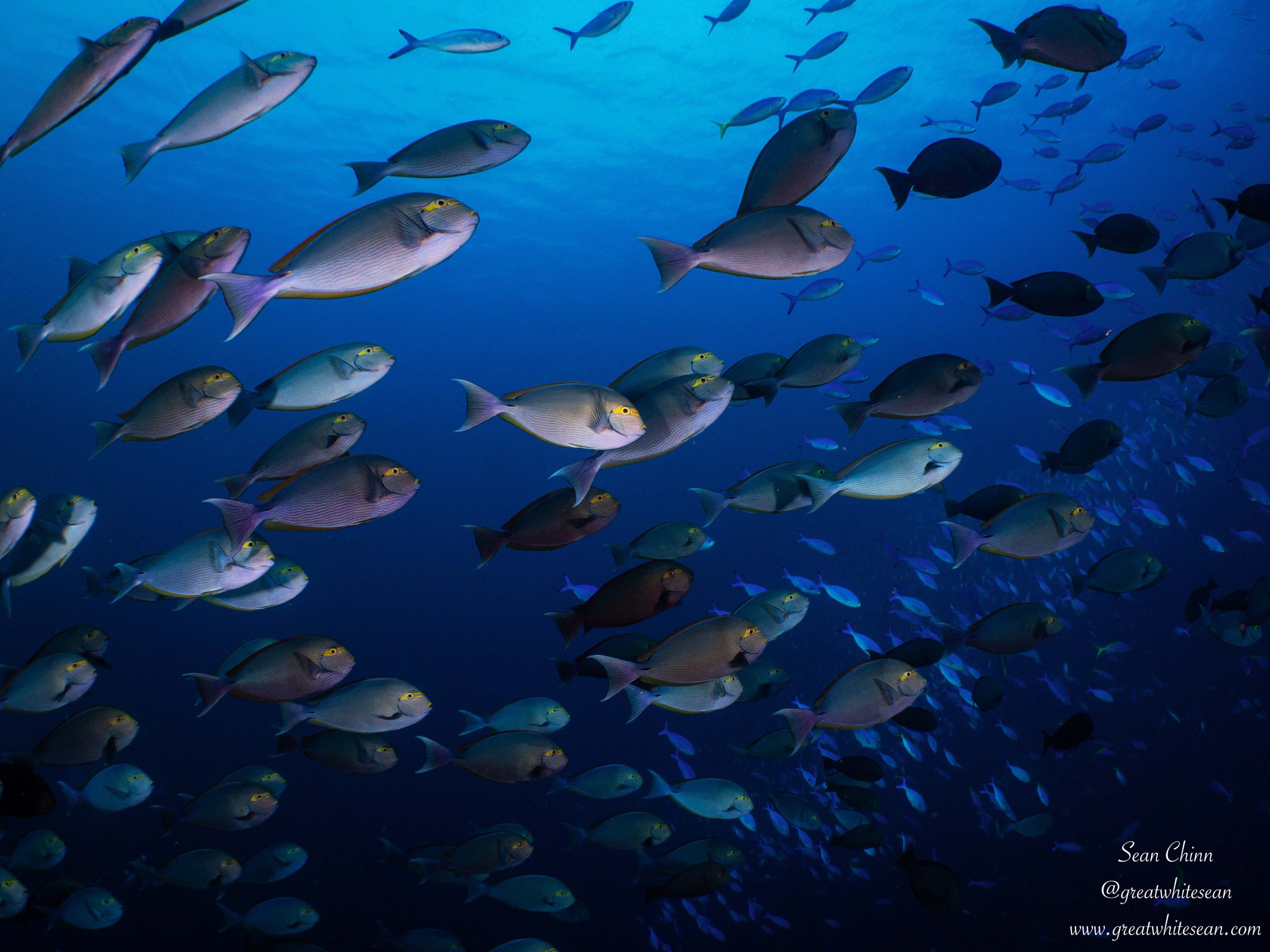
I was more than psyched for day 3. With a dive full of life to start with at ‘Castle Rock,’ followed by what should be an adrenaline-fuelled drift at ‘The Cauldron’ aka ‘Shotgun’, It was sure to be an adventure. Sure enough, once we descended along the pinnacle at ‘Castle Rock’ to around 25 metres, we were surrounded by an abundance of fish life. Numerous banner fish, schools of fusilier and surgeonfish swam in unison, while the odd friendly batfish would come to check each diver out. A distant school of jackfish were joined by the odd tuna and a circling whitetip reef shark to add the predators to the list of life. It was such fun floating amongst the amount of life before letting the current take us onto the reef. A few macro delights were waiting, as a blue ribbon eel and leaffish were spotted, alongside a friendly hawksbill turtle. This was certainly a dive that didn’t disappoint.
It was time for ‘The Cauldron,’ a notorious dive that struck fear into the hearts of some and was legendary to others. Tales of masks flying off in the current made for a little nerves before descending, but excitement from others about how the drift can shoot you through the channel between Gili Lawa Laut and Gili Lawa Darat. However, it was a little different for my dive and the current was fairly mild in comparison to what I expected. It still had enough current for a nice push through the channel and also provided some great marine life encounters. Another new shark species for me was a major highlight, as I finally got to see and photograph a bamboo shark. It was also the site for our only manta ray encounter of the trip. Unfortunately, the manta had passed my group before we saw it and we only got the tail end as it glided through the current away from us. A smaller mobula ray was also spotted at a distance, and a small school of bigeye trevally before… you guessed it… yet another friendly hawksbill on the safety stop.

Day 3 was becoming the best diving day so far and I’d say the next dive at ‘Golden Passage’ was my favourite wide angle dive of the trip. I just love cephalopods and am a big fan of cuttlefish. Three rather large broadclub cuttlefish at the very start of the dive were more than welcome and provided great photography opportunities. We then had an amazing drift along the passage with a bit more oomph than ‘Shotgun’. More hawksbill turtles along the way, a sleeping bamboo shark in the overhangs, and a dancing school of fusiliers provided extra marine life joys. We finished the diving day with a night dive at ‘Gili Lawa Darat Bay’. Wow!!!! Once again, critters stole the show, along with a rather successful bobtail squid snooted photography shoot for me. Devil scorpionfish, nudibranch, flatworms, shrimps, squat lobsters and juvenile harlequin sweetlips made sure every single minute was interesting.
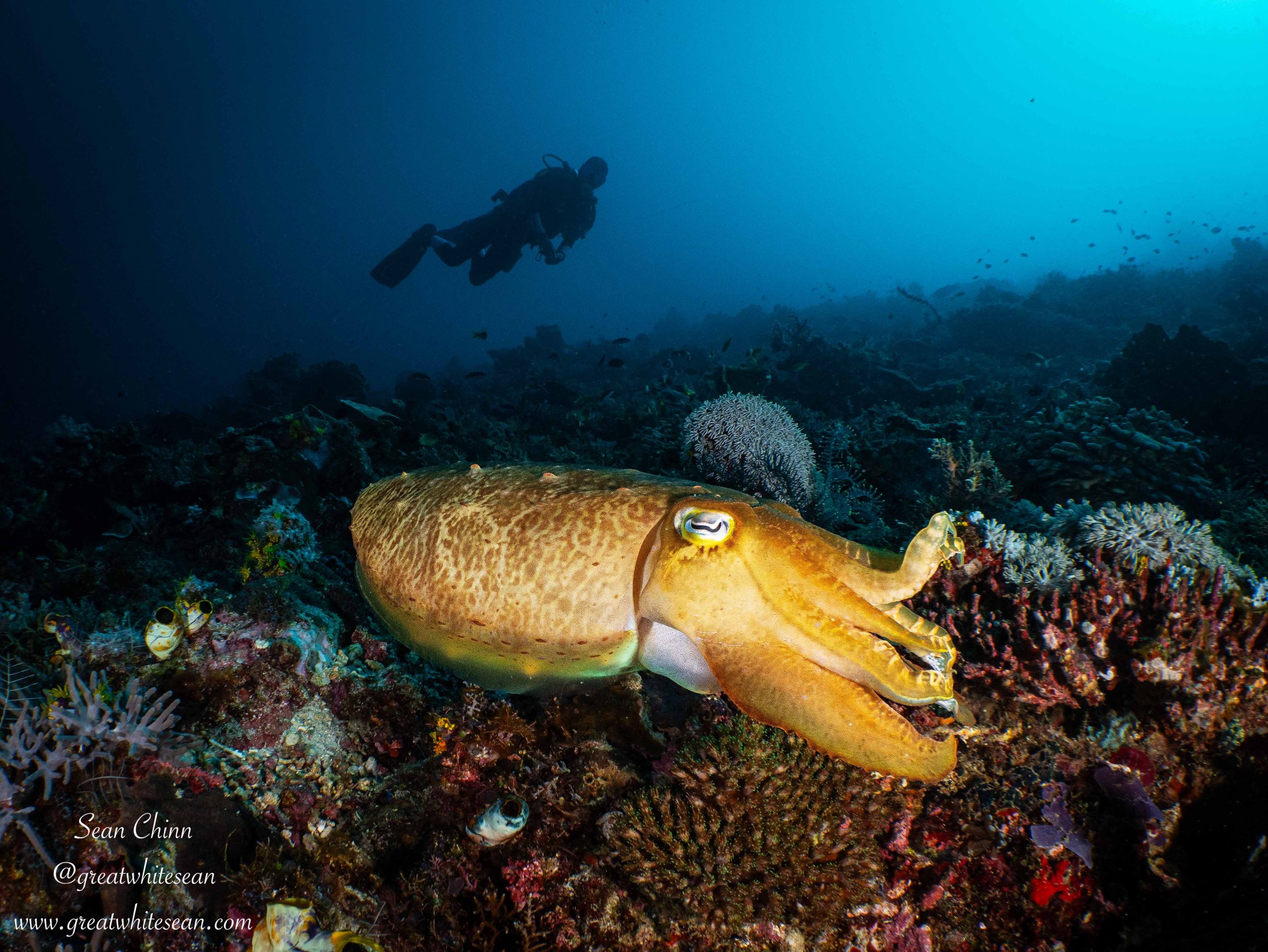
After a short documentary about Komodo dragons on the evening of day 3 to get us excited for seeing them, I was definitely more than excited! Day 4 was a day of giving it our best shot to get some great manta ray action. We started with another beautiful pinnacle reef around ‘Crystal Rock’. Small school of batfish, Napoleon wrasse, whitetip reef sharks, a blacktip reef shark and lion fish greeted us, before we moved on to try for mantas once again. Back to ‘Karang Makassar’ and a drift along the sand and rubble, passing small sections of coral formations that would act as cleaning stations. Unfortunately, we were once again unlucky with our manta ray sightings but this dive did deliver more interesting encounters: A bamboo shark resting out in the open before swimming off, green sea turtles, hawksbill turtles and, once again, a large broadclub cuttlefish.
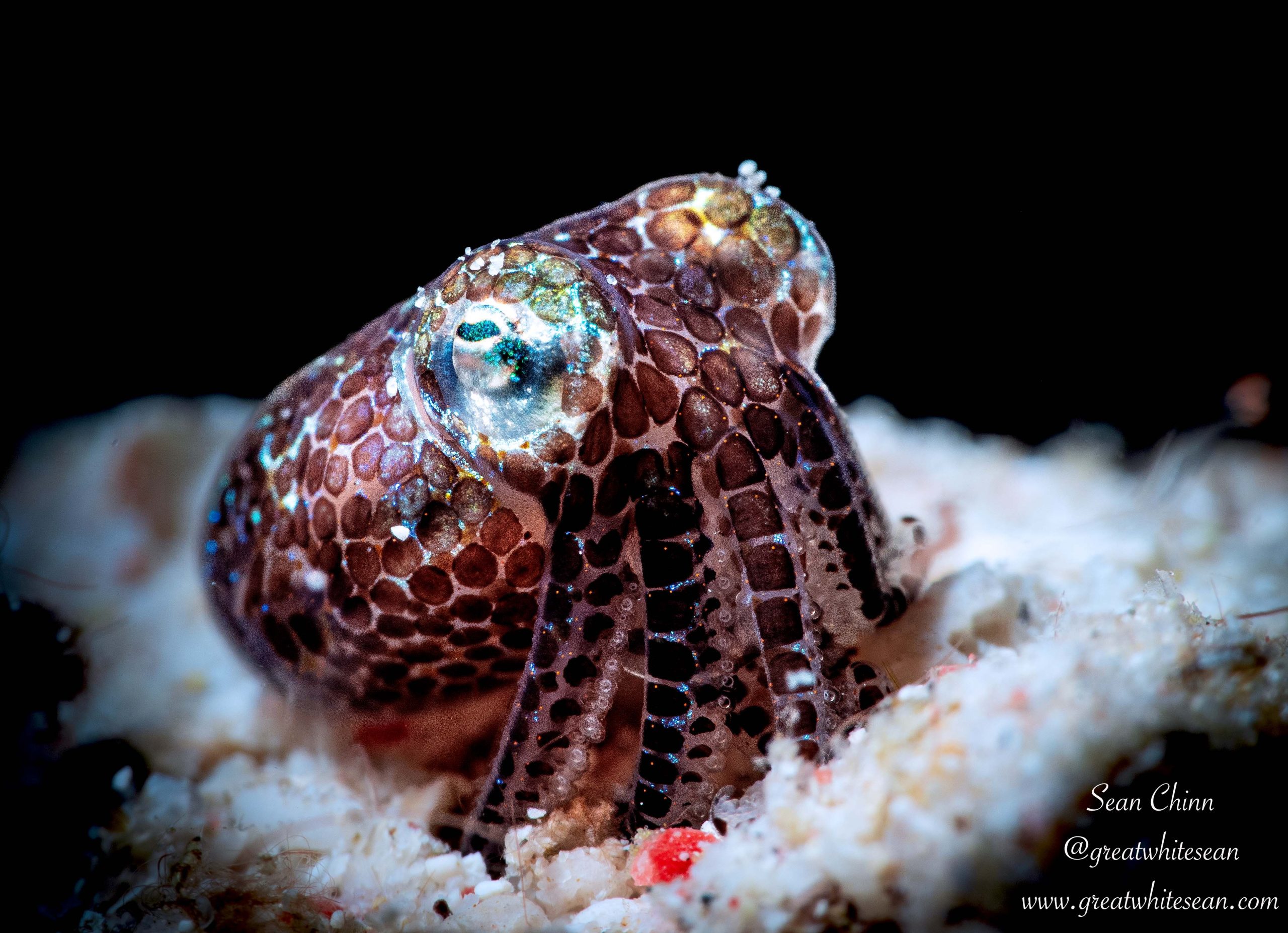
A final day dive at ‘Mauan’ in the hope of seeing mantas wasn’t much to write home about in this instance. We gave it our best shot with the mantas and that’s all we can ask of the accommodating crew onboard. Unfortunately, wildlife doesn’t always play ball and on another trip you could have some of the best manta ray action of your life. However, the final night dive of the trip more than made up for it. Wow, wow, wow!!! What a dive! With some of the most unique critters you can find. So much so, I have been asked to keep the dive site quiet in fear of the information getting to the wrong people and bad practice being at play. A shame it has to be that way but a necessity at times. While numerous species of nudibranch were spotted on the dive, it was the elusive ghost melibe that stole the show. A transparent nudibranch made up of white lines, giving it a skeletal appearance that was hard to photograph but soooo exciting to see!

The unique critters didn’t stop there, as another highlight macro critter – the paddle flap scorpionfish – was spotted to the excitement of the guides and cruise director Fareez, who screamed and danced (with excitement!) underwater. Definitely a sought-after critter in the underwater photography world, and we had two join us for the dive. There was a lot of sand and sediment in the water, making it difficult for photography and I wasn’t completely ecstatic with the shots I got, but loved to see another new-to-me species. But guess what? The fun didn’t stop there, as a black frogfish was sitting under some broken coral just next to the scorpionfish. WHAT A DIVE!!!!!!

After such an incredible final night dive, the final day also finished the trip in incredible fashion, ensuring the need to return was firmly there. Starting with a first dive at Pengah, where a banded sea krait hunting throughout the reef was a great start, and more colourful coral formations around the pinnacle, with amazing hard coral just below the surface. It was a dive for wide angle and macro, as ladybugs, different nudibranch, and a leaf scorpionfish were found. As well as a large octopus working its way through the reef before hiding when we locked eyes. The final dive really put the icing on the cake. It was a macro dive amongst sand and rubble: numerous nudibranch again dazzled, with the ‘Pikachu’ nudi my favourite. Peacock mantis shrimp, spearing mantis shrimp, longhorn cowfish, orangutan crab, squat lobster and shrimp ensured a special dive before the grand finale – a thorny seahorse. What a dive and what diving for my five days in Komodo National Park.
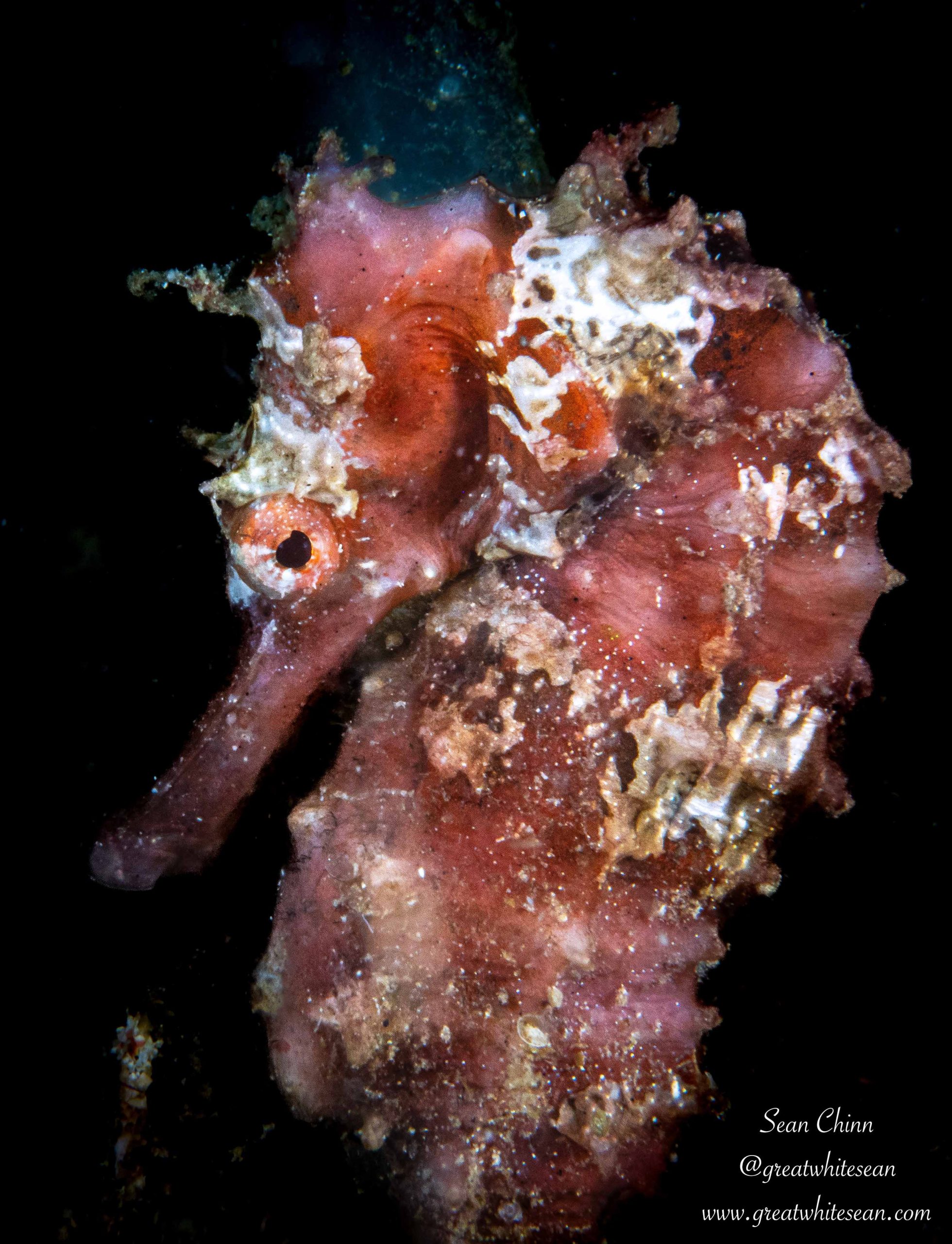
Well, the diving might have been over, but the trip certainly wasn’t. In fact, it was time for one of the tours I’d been looking forward to the most. Time to see Komodo dragons on Rinca Island. As much as I love liveaboards, it’s always nice to get back on land. A jetty led us onto a boardwalk path, where within minutes we laid our eyes on our first dragon, before getting closer to the information centre and seeing the big male that commands the area. Sprawled out on the floor, his size was immense. A great start but I longed for those close encounters and not looking down from a platform.
We were soon through the information centre and onto the wild ground to start our very short trek. We didn’t need to go far at all as a resting large female was just next to the information centre, followed by a small juvenile who came running through stealing all the attention. It was a little cutie and fun to see and photograph. Being a photographer, you always have images in mind before you go somewhere. I was desperate to get a large dragon postured up facing or walking to the camera. I quickly realised that these were lazy animals in the midday sun (as am I). It’s too hot and they risk overheating if they’re too active. I began to lose hope for the shot I wanted, as we trekked a short while up the hill and found another resting female. Amazing to see once again before it was all too soon ready to leave. I could have trekked so much more of the island.
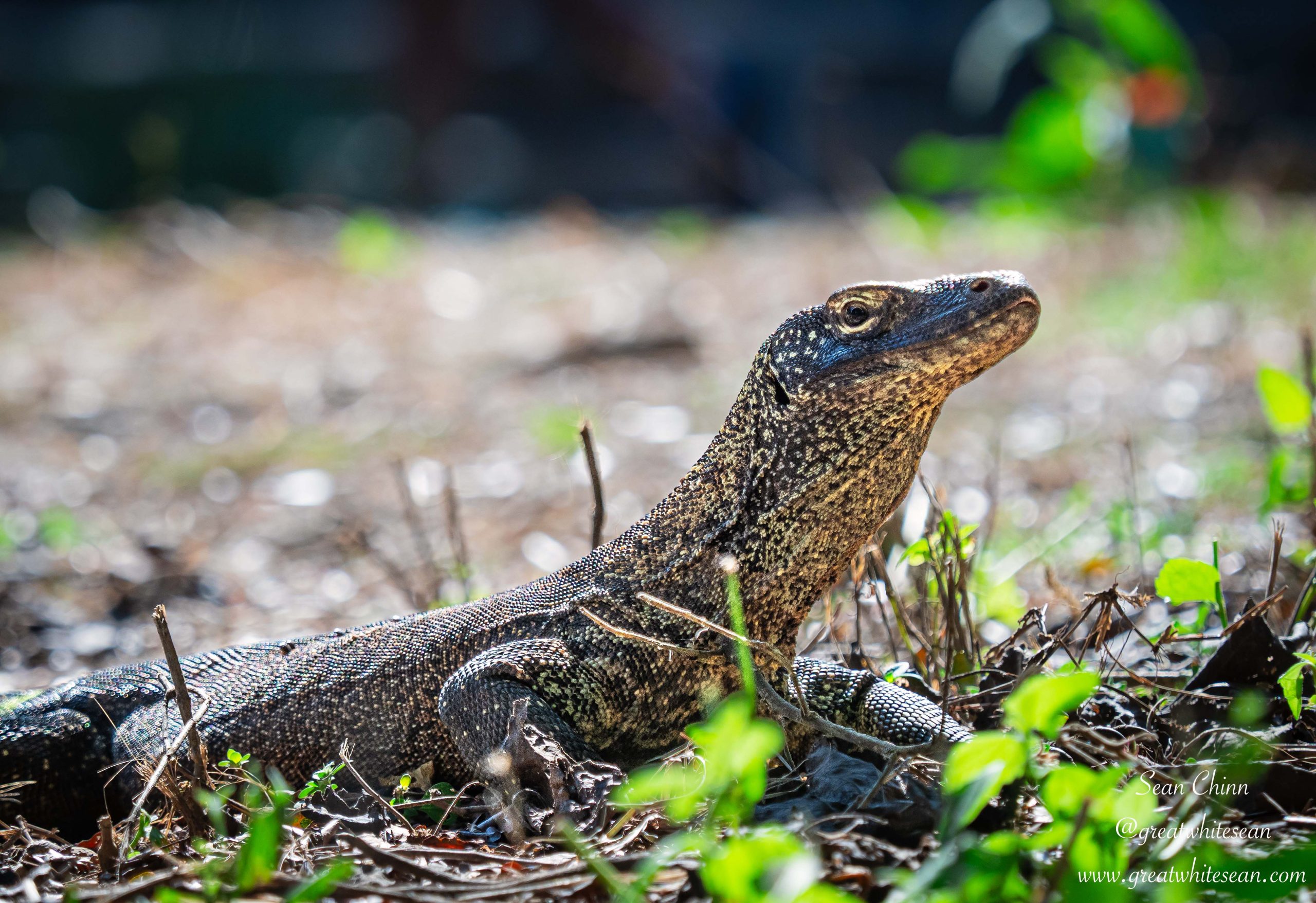
As we waited around the outside seating area of the information centre, I was going through my shots with Fareez and explaining the shots I was hoping for. He said maybe I would get lucky while we waited for the others to explore the gift shop. I knew I didn’t have long. Suddenly, some commotion back outside on the wild ground caught my attention. DOUBLE JACKPOT!!! I went flying out of the gate and there was a dragon walking directly towards me. Postured up, showing off its muscles, only made better by the fact that it was the huge male that swaggered into his arena. Showing off to his adoring crowd. I was completely made up and thankfully got some shots I was happy with. He slowly walked around using his tongue to taste all the flavours, before finally slumping on the ground, sprawled out in the shade.
My trip was now complete, or so I thought. I got what I wanted and was happy to return to my family completely content (apart from losing my drone that is!) That was until the grand finale, the little extra I didn’t know I needed, but it’s always those moments that separate a great trip from an unbelievably fantastic trip. The little extras that make you long to return.
Moored up at Pulau Kalong under an amazing sunset, we waited for the show to start. A spectacle that only nature can deliver soon ensued, as thousands upon thousands of flying foxes left their daytime roost on the island. Engulfing the orange sky with black silhouettes akin to the batman sign. They just kept coming and coming for the next hour or so before we enjoyed an amazing BBQ dinner on the top deck and an incredible show of songs and dance from the amazing crew. Another fantastic trip onboard La Galigo and I can only hope I’ll be back soon.
For more information about diving in Komodo:
Sean Chinn Instagram: @greatwhitesean
Email: sean@greatwhitesean.com
Whatsapp: +62 812 2000 2025
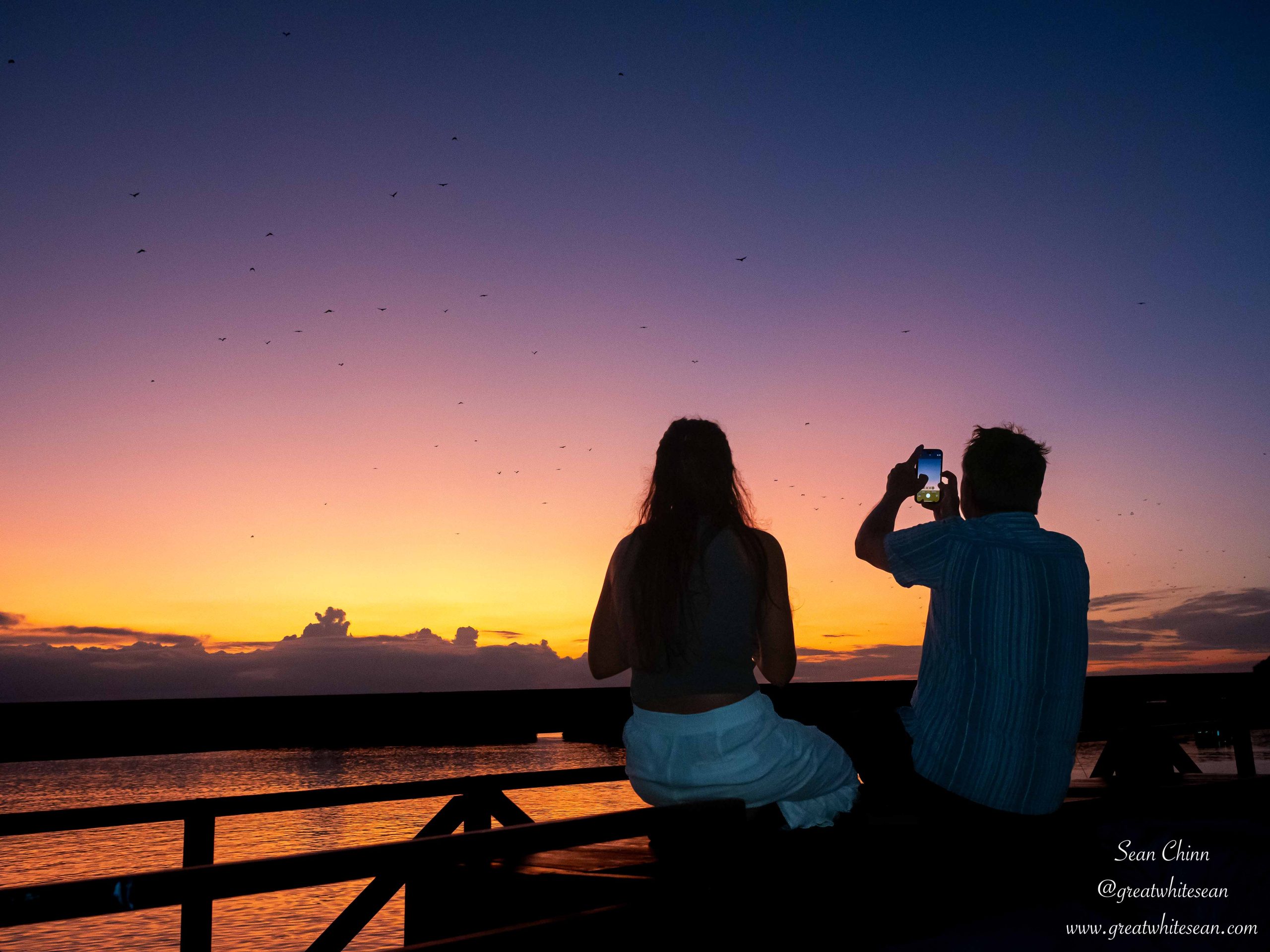
Blogs
A Welcome Return (Part 1)

After an incredibly successful trip onboard La Galigo last October exploring Raja Ampat, I was so happy to jump back onboard. This time exploring another bucket list destination – Komodo National Park.
Strangely, it’s not the underwater world around Komodo that makes it such a bucket list destination for me. Growing up fascinated with the biggest species of each animal, the Komodo dragon has been a lifelong ambition for me to see. I was so excited to now get the opportunity, while also knowing the diving around the National Park would be way more than an added bonus. In my mind, Komodo was synonymous with crazy currents, mantas and some suspect visibility at times. I was expecting really tricky adventurous diving. What I found, was actually very surprising to me and left me with a very pleasant content feeling after the trip. Let’s find out what La Galigo’s Jurassic Komodo trip had in store…

I was on a much shorter trip this time (6D/5N) compared to my Raja trip last year. Now, I’m going to try hard not to compare Komodo with Raja Ampat, but it is hard not to, after doing both trips relatively close in time to each other. However, what I found were two places that complimented each other so well. Their differences are part of their charm and the reason why both are must-do trips. This was evident in the contrasting landscape while exploring the islands around Komodo. The drier climate creating stunning rugged savannah islands rising from the clear blue waters. Covered in a mixture of yellow and green grass, creating a beautiful golden glow at sunrise and sunset. With isolated trees creating a focal point and hillsides leading into idyllic white sand beaches. Another breathtaking area to explore and no better way than to sail from island to island.
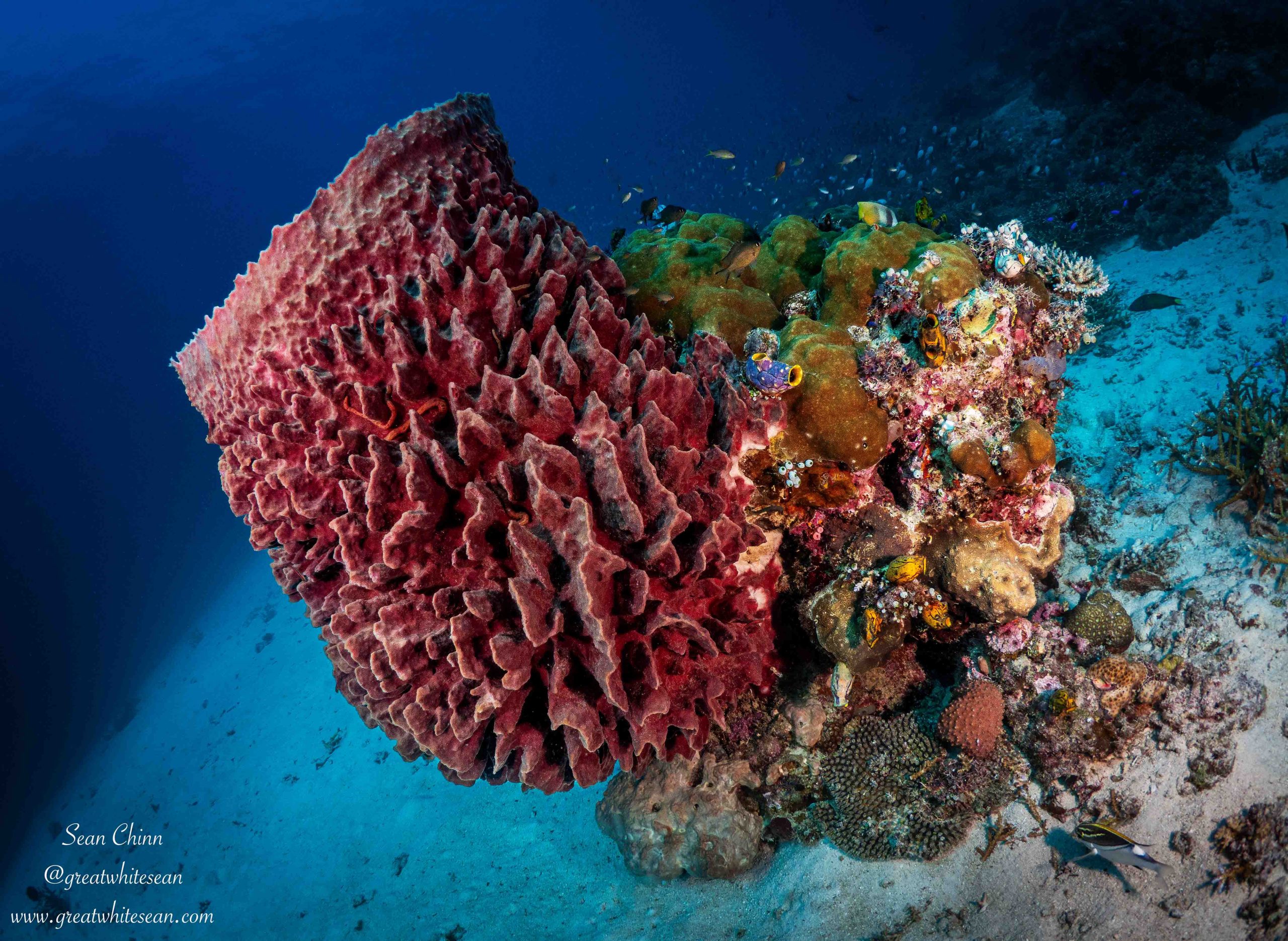
11 guests were onboard for my trip and diving was split into three groups, no more than four divers with each dive guide. A spacious dive deck plenty big enough for the number of guests onboard and two speedboats transporting us to each dive site. An extremely helpful crew providing a comfortable journey and making sure we barely had to lift a finger. The food onboard was again super delicious, with the Soto Ayam being a highlight, while the beef rendang again had my mouth watering. With spacious rooms throughout and comfortable beds and pillows, another relaxing stay was on the agenda between dives. Speaking of dives, let’s see what underwater had in store…
Apologies!! I am going to compare Komodo and Raja Ampat one last time, this time in relation to the check dive. In my mind, before I had dived both, I had Komodo as the place with crazy currents and sometimes poorer visibility, with Raja as the opposite. My check dives couldn’t have been further from what I had imagined. While my dive in Raja was limited vis and a relatively strong current, diving in Komodo started super relaxed, with next to no current and some amazing visibility at ‘Sebayor Kecil’. Such a pleasant start to my Komodo trip with beautiful reefs full of healthy hard and soft coral. Yellow snapper swimming in unison, lion fish, crocodile fish and a blue spotted stingray welcoming me nicely to life underwater in Komodo.

Following on from such a relaxed dive, I soon realised it was the little critters that were going to steal the show in this beautiful paradise. The first night dive at ‘Sebayor Besar’ showed me what treats I had in store for the trip. With a very small red octopus only few centimetres in size, followed by a larger reef octopus. Nudibranch, peacock mantis shrimp, crabs and more made sure every minute of the dive was enjoyed before getting back onboard. The night wasn’t finished, as a fun game of ‘Cards Against Humanity’ broke the ice with everyone onboard and was the perfect example of why I love liveaboards so much. Meeting people from all walks of life while confined to life onboard broadens your horizons. It was a great laugh with a great group.
The next day followed on with some more beautiful reefs full of life. ‘Tarawa Besar’ and the magical ‘Batu Balong’ were the dive sites of choice. A mixture of stunning hard coral formations and vibrant soft coral dazzled like a Van Gogh painting full of colour. It was also the introduction of some friendly turtles, in particular a number of hawksbill that quite happily swam between divers and allowed for close interactions. A grumpy green sea turtle was the highlight for me, as it rested amongst the coral in the final moments of ‘Tarawa Besar’. I just love their patterned shell.
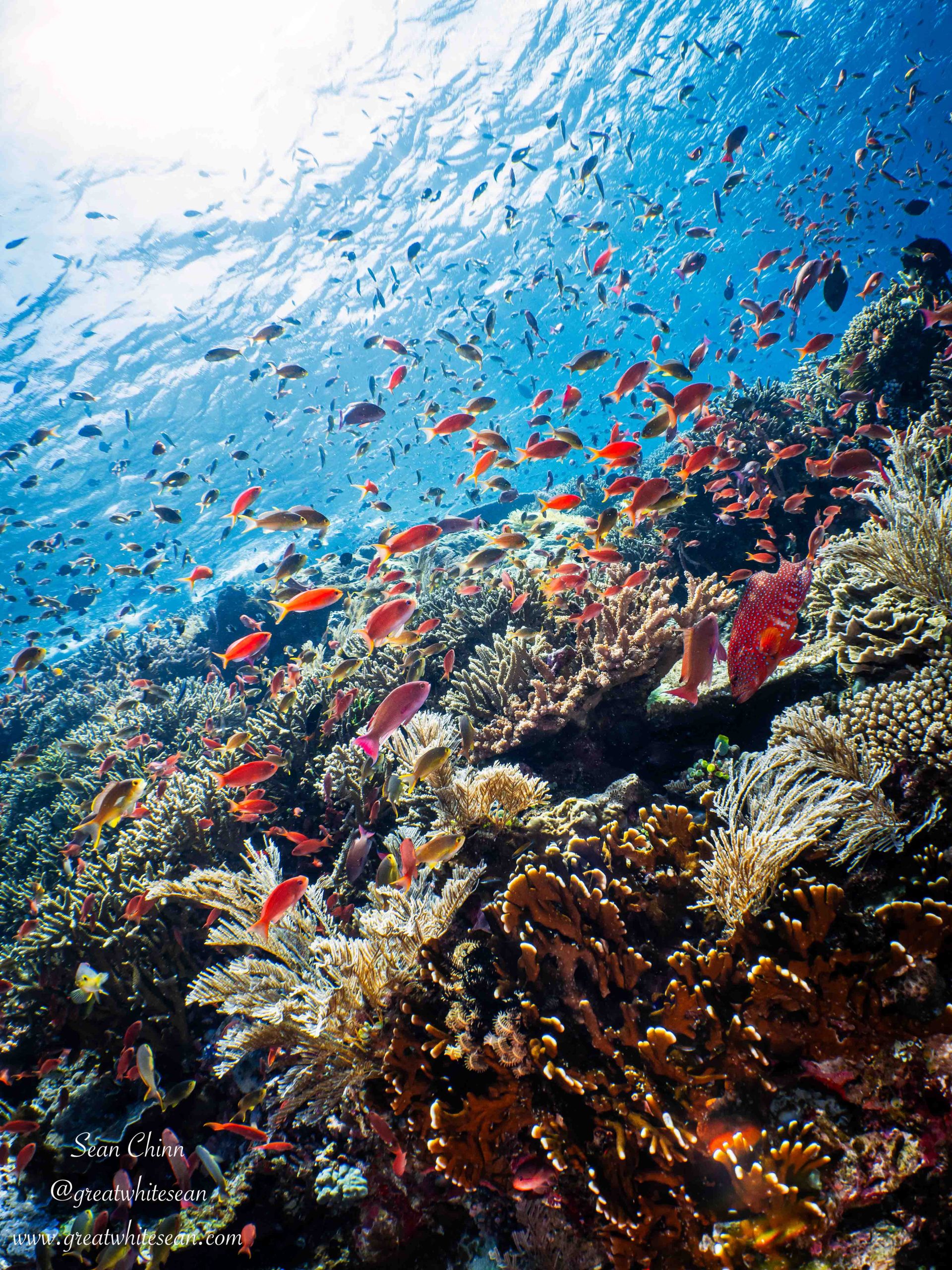
Whitetip reef sharks, scorpionfish, a giant pufferfish, moray eels and more made sure it wasn’t all about the turtles. And, to be honest, the dancing anthias on top of ‘Batu Balong’ amongst the pristine hard coral provided the bliss on the safety stop. A delightful end before disappointedly, I finally got unlucky with manta rays on dive three. We were at ‘Karang Makassar’ in the hope of drifting along the rubble and sand to get lucky with a moment with some majestic mantas. I’m normally quite lucky with manta rays and have had some pretty wild encounters around the world over my diving life. However, this time nature unfortunately didn’t play ball. Fingers crossed for next time!!
Thankfully it didn’t take away from what was another amazing day in Komodo. A sunset trek on Gili Lawa Darat got us back on land and we enjoyed the amazing scenery. Incredible views over the bay and the island resembling a snake head were made even more enjoyable by yet another gorgeous sunset. With deer roaming free, it was a great mini adventure, getting a close-up view of these rugged savannah islands before another fantastic night dive at Komodo Bay.
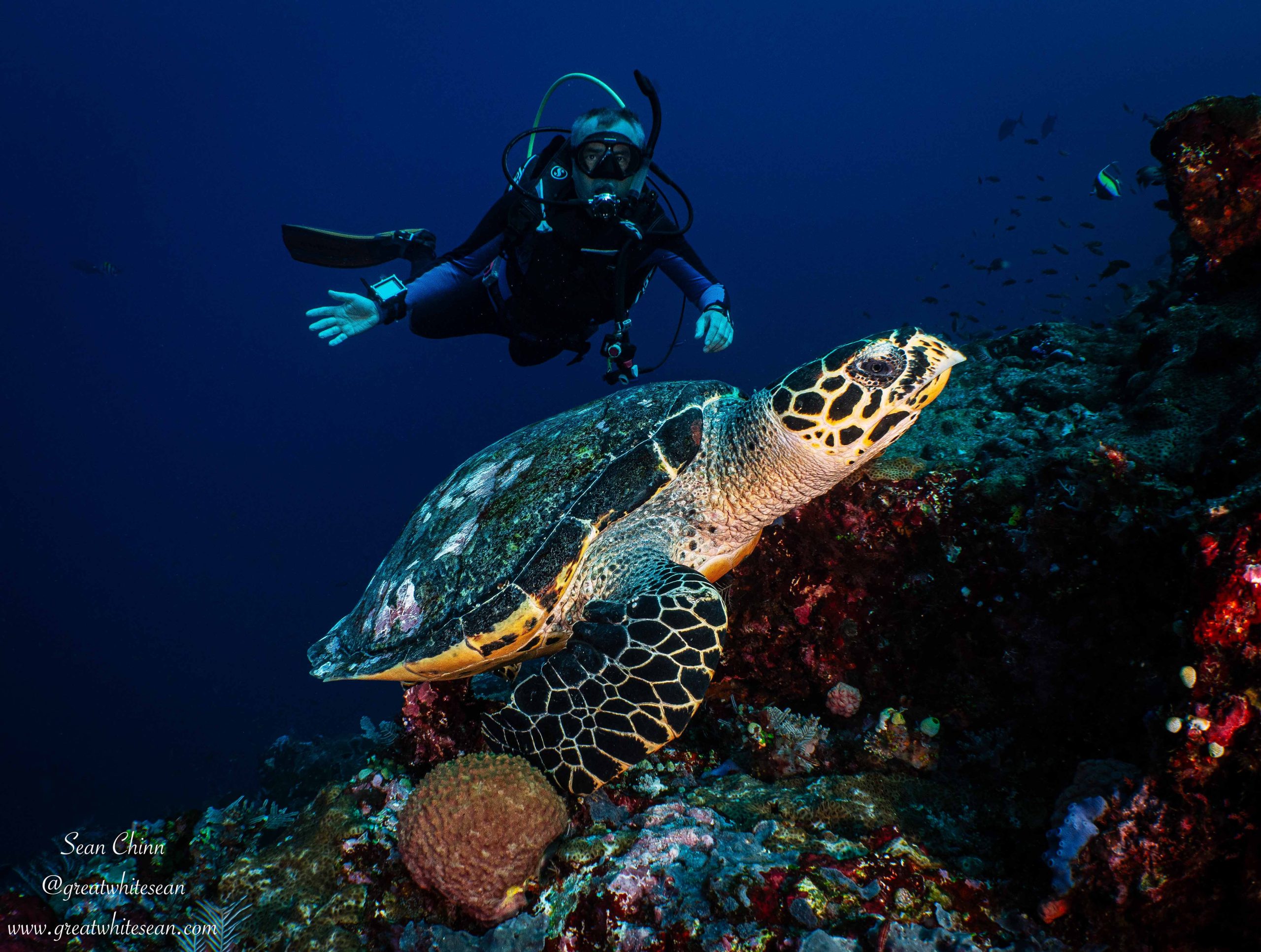
Numerous nudibranch were spotted and even a flatworm working its way over a scorpionfish’s head and eye provided some funny entertainment. I’m a sucker for a cuttlefish, so getting the chance to see and photograph a small one is always special. However, the most unique critter was the Lembeh sea dragon. Such a cute and surreal-looking creature that unfortunately wasn’t in a great position for photography. Hopefully I’ll get another chance one day and capture its unique beauty.
What a great start to life in Komodo onboard La Galigo. Be sure to stay tuned for part 2 and see what delights awaited us.
For more information about diving in Komodo:
Sean Chinn Instagram: @greatwhitesean
Email: sean@greatwhitesean.com
Whatsapp: +62 812 2000 2025



















